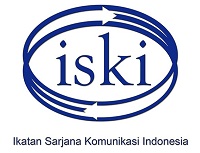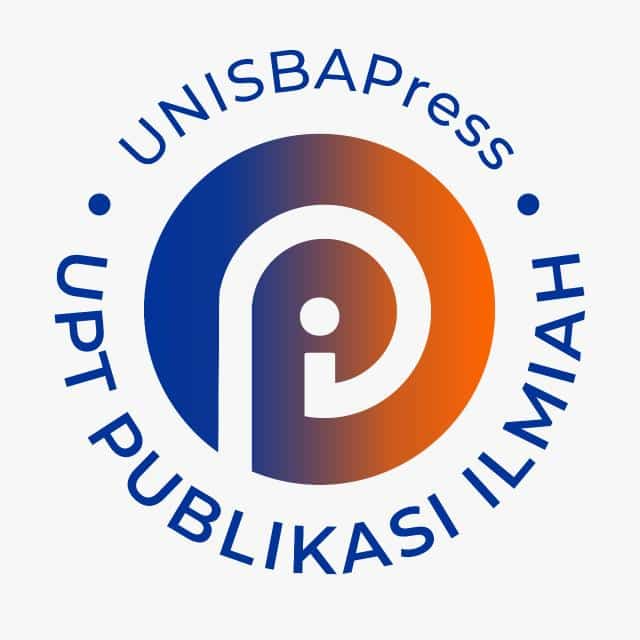Information Quality of Regional Government’s Websites in Central Java Province
DOI:
https://doi.org/10.29313/mediator.v16i2.2639Keywords:
ethics, government public relations, information quality, websiteAbstract
As stated in the Public Information Disclosure Act, Government Public Relations bears a dual responsibility, managing both the main website of the regional government and the PPID (Information and Documentation Management Official) websites. This research analyzes the content of the PPID websites of 29 districts and 6 cities in Central Java Province. This research used a website assessment instrument consisting of 84 questions. This instrument is a modification of the Industrial Website Evaluation Model which focuses on information quality and information disclosure policies in Indonesia. The research results indicate that the implementation of the public information disclosure policy has not yet fully aligned with government public relations ethics. Several aspects still require improvement. Government Public Relations needs to focus on empathy in managing the PPID website and needs to acknowledge the behavior of the public who tend to access the main website belonging to each institution, not the PPID website. Therefore, government public relations needs to distinguish between the content of the main website and the PPID website. However, commitment is required in managing the PPID website to ensure that people are motivated to access information and can do so effectively.
References
Alshira’H, M. H. (2020). The Effects of Usability and Accessibility for E-Government Services on the End-User Satisfaction. International Journal of Interactive Mobile Technologies, 14(13), 78–90. https://doi.org/10.3991/ijim.v14i13.14659
Avery, E. J., & Graham, M. W. (2013). Political public relations and the promotion of participatory, transparent government through social media. International Journal of Strategic Communication, 7(4), 274–291. https://doi.org/10.1080/1553118X.2013.824885
Brown, A. J., Vandekerckhove, W., & Dreyfus, S. (2014). The relationship between transparency, whistleblowing, and public trust. In Research Handbook on Transparency (pp. 30–58). Edward Elgar Publishing Ltd. https://doi.org/10.4337/9781781007945.00008
Craig, C., Ngondo, P. S., & Flynn, M. A. (2016). How firm is your digital handshake?: Mission statements and transparency. Public Relations Review, 42(4), 692–694. https://doi.org/10.1016/j.pubrev.2016.05.002
Cronin, A. M. (2020). The secrecy−transparency dynamic: A sociological reframing of secrecy and transparency for public relations research. Public Relations Inquiry, 9(3), 219–236. https://doi.org/10.1177/2046147X20920800
Dong, C., & Morehouse, J. (2022). Toward a caring government: Advancing ethical government public relations with a care-based relationship cultivation model. Journal of Public Relations Research, 34(5), 179–207. https://doi.org/10.1080/1062726X.2022.2119978
Erkkilä, T. (2020). Transparency in Public Administration. In Oxford Research Encyclopedia of Politics. Oxford University Press. https://doi.org/10.1093/acrefore/9780190228637.013.1404
Ernungtyas, N. F., & Boer, R. F. (2023). The Citizen Trust and Engagement in Indonesia Government’s Social Media and Website. Mediator: Jurnal Komunikasi, 16(1). https://doi.org/10.29313/mediator.v16i1.2159
Goncalves, G., & Santos, J. M. (2017). What ethics for governmental communication? Ethical issues on government public relations / Que ética para a comunicação governamental? Questões éticas nas relações públicas governamentais. https://doi.org/10.5783/RIRP-14-2017-10-165-182
Holland, D., Krause, A., Provencher, J., & Seltzer, T. (2018). Transparency tested: The influence of message features on public perceptions of organizational transparency. Public Relations Review, 44(2), 256–264. https://doi.org/10.1016/j.pubrev.2017.12.002
Ikonen, P., Luoma-aho, V., & Bowen, S. A. (2017). Transparency for Sponsored Content: Analysing Codes of Ethics in Public Relations, Marketing, Advertising and Journalism. International Journal of Strategic Communication, 11(2), 165–178. https://doi.org/10.1080/1553118X.2016.1252917
King, B. A., & Youngblood, N. E. (2016). E-government in Alabama: An analysis of county voting and election website content, usability, accessibility, and mobile readiness. Government Information Quarterly, 33(4), 715–726. https://doi.org/10.1016/j.giq.2016.09.001
Kriyantono, R. (2019). APOLOGIA STRATEGIES AND ETHICAL ASPECTS OF GOVERNMENT PUBLIC RELATIONS IN A CRISIS SITUATION. Jurnal Representamen, 5(2).
Lee, B.-K., Lee, E. H., & Lee, T. (David). (2023). The effect of E-Government website evaluation on user satisfaction and intention to use: the mediating role of warmth and competence judgment on government. Information, Communication & Society, 26(9), 1868–1889. https://doi.org/10.1080/1369118X.2022.2041701
Lee, M., Neeley, G., & Stewart, K. (2021). The practice of government public relations. Routledge.
Lee, R. L., & Joseph, R. C. (2013). An examination of web disclosure and organizational transparency. Computers in Human Behavior, 29(6), 2218–2224. https://doi.org/10.1016/j.chb.2013.05.017
Moore, S. (2018). Towards a Sociology of Institutional Transparency: Openness, Deception and the Problem of Public Trust. Sociology, 52(2), 416–430. https://doi.org/10.1177/0038038516686530
Neuendorf, K. A. (2017). The content analysis guidebook. Sage.
Perhumas. (1977). Kode Etik Perhumas. https://www.perhumas.or.id/kode-etik-perhumas/
Porumbescu, G. (2017). Linking Transparency to Trust in Government and Voice. American Review of Public Administration, 47(5), 520–537. https://doi.org/10.1177/0275074015607301
Undang-Undang Nomor 14 Tahun 2008 tentang Keterbukaan Informasi Publik (KIP), (2008).
Peraturan Pemerintah Republik Indonesia Nomor 61 Tahun 2010 tentang Pelaksanaan Undang-Undang Nomor 14 Tahun 2008 tentang Keterbukaan Informasi Publik, (2010).
Priyadarshini, C., Sreejesh, S., & Anusree, M. R. (2017). Effect of information quality of employment website on attitude toward the website. International Journal of Manpower, 38(5), 729–745. https://doi.org/10.1108/IJM-12-2015-0235
Rasool, T., & Warraich, N. F. (2018). Does Quality matter. Proceedings of the 11th International Conference on Theory and Practice of Electronic Governance, 433–442. https://doi.org/10.1145/3209415.3209473
Rasyid, A., & Alfina, I. (2017). E-Service Quality Evaluation on E-Government Website: Case Study BPJS Kesehatan Indonesia. Journal of Physics: Conference Series, 801, 012036. https://doi.org/10.1088/1742-6596/801/1/012036
Ratnasari, E., Rahmat, A., & Prastowo, F. A. A. (2018). Peran Humas Perguruan Tinggi Negeri Badan Hukum dalam Implementasi Kebijakan Keterbukaan Informasi. PRofesi Humas, 3(1), 21–38.
Rohmah, H., & Fataron, Z. A. (2020). Effect Analysis of Trust , Ease , Information Quality , Halal Product on Online Purchase Decision of 2016-2018 Batch Students of Islamic Economics Study Program in UIN Walisongo at Shopee Marketplace. 1–19.
Saldanha, D. M. F., Dias, C. N., & Guillaumon, S. (2022). Transparency and accountability in digital public services: Learning from the Brazilian cases. Government Information Quarterly, 39(2), 101680. https://doi.org/10.1016/j.giq.2022.101680
Schmidthuber, L., Ingrams, A., & Hilgers, D. (2021). Government Openness and Public Trust: The Mediating Role of Democratic Capacity. Public Administration Review, 81(1), 91–109. https://doi.org/10.1111/puar.13298
Sukmono, F. G., & Surya Kencana, A. P. (2023). Pola Baru Pengelolaan Media Digital dalam Instagram @humasjogja. Mediator: Jurnal Komunikasi, 15(2), 264–277. https://doi.org/10.29313/mediator.v15i2.10705
Tao, D., LeRouge, C., Smith, K. J., & De Leo, G. (2017). Defining Information Quality Into Health Websites: A Conceptual Framework of Health Website Information Quality for Educated Young Adults. JMIR Human Factors, 4(4), e25. https://doi.org/10.2196/humanfactors.6455
Vujnovic, M., & Kruckeberg, D. (2016). Pitfalls and promises of transparency in the digital age. Public Relations Inquiry, 5(2), 121–143. https://doi.org/10.1177/2046147X16635227
Wahyudi, S. E., Pinandito, A., & Saputra, M. C. (2017). Penilaian Kualitas Website E-Government Pejabat Pengelola Informasi dan Dokumentasi (PPID) Dengan Dimensi e-GovQual (Studi Pada Dinas Komunikasi dan Informatika Pemerintah Kota Probolinggo). Jurnal Pengembangan Teknologi Informasi Dan Ilmu Komputer, 1(2), 108–117. http://j-ptiik.ub.ac.id
Wood, T., & Aronczyk, M. (2020). Publicity and Transparency. American Behavioral Scientist, 64(11), 1531–1544. https://doi.org/10.1177/0002764220945359
Downloads
Published
Issue
Section
License
Copyright (c) 2023 Eny Ratnasari, Ascharisa Mettasatya Afrilia, Wahyu Eka Putri

This work is licensed under a Creative Commons Attribution-ShareAlike 4.0 International License.























